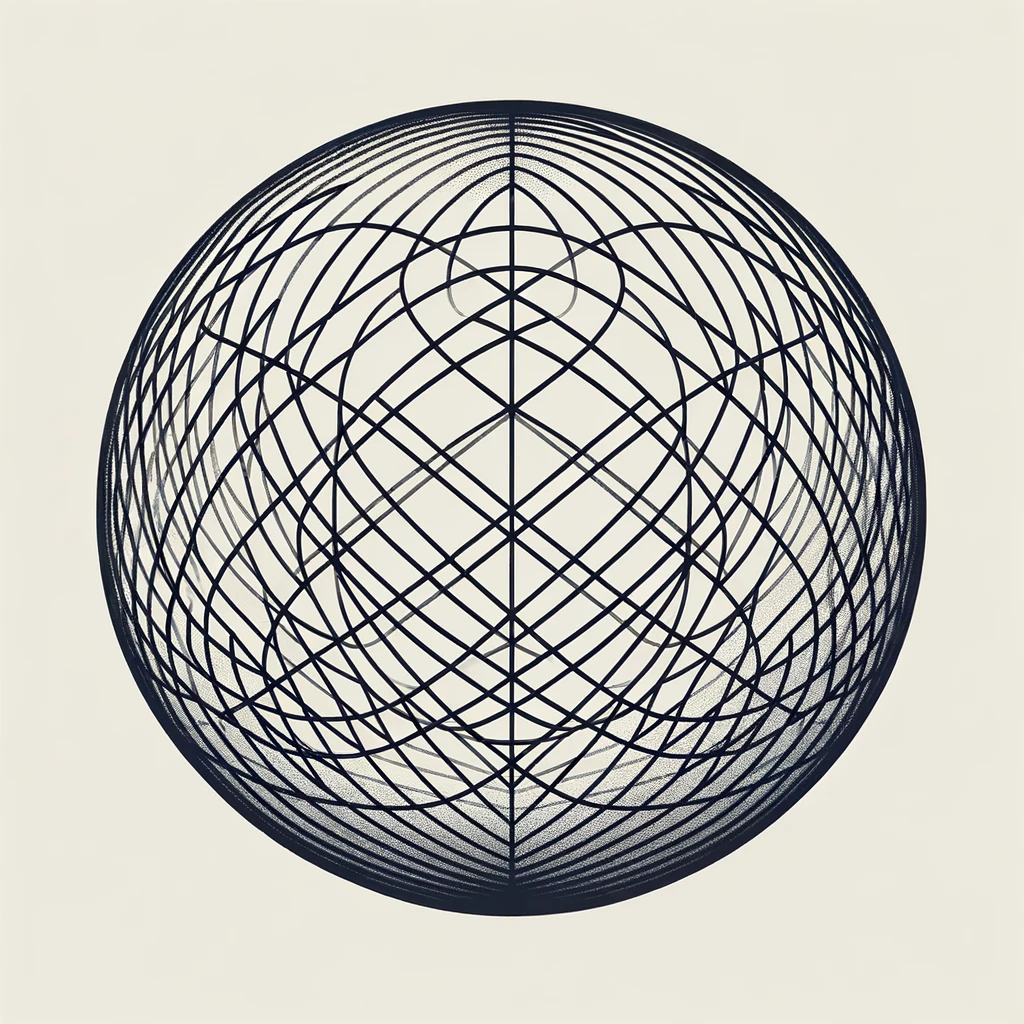Hello everyone. My name is Handa from Noosology Research Center at Musashino Gakuin University. This is the second presentation of my research video. In the first video, I discussed the relationship between “noos (nous)” and Noosology, referring to an ancient Greek philosopher, Anaxagoras. Today, I would like to talk a little further about the implications of the word “noos,” which is also translated as ‘Divine Intelligence’ or ‘active intelligence,’ for your better understanding. For that purpose, I will introduce the philosophies of Plato and Heidegger. Thus, the title of my talk today will be “Heidegger as a mediator between Plato and Aristotle, and Noosology as the overcomer of them.” … Hmm, it’s kinda long title. Well, that’s OK. Let’s begin.
As I mentioned in the last issue, Heidegger harshly criticized Socrates for transforming the philosophy of physis into a philosophy of subjectivity by introducing human values such as goodness and justice. However, it does not mean the Greeks have forgotten the thought of noos, the retrieval of physis. Although not mentioned clearly, noos has left its mark in the subsequent Western philosophy — it has been paraphrased under various names by Western philosophers, including Plato and Aristotle, as if those were its testament.
Anyway, the ancient Greeks have foredoomed the study of philosophy on the question of “How did nature begin?” And it seems to be Plato who made this curse definitive. You must have heard about him, haven’t you? — ‘The history of Western philosophy is nothing but vast commentaries on Plato’ — This is a quote from Whitehead, one of the leading philosophers of the 20th century. That means you can’t talk about western philosophy without Plato.
When we think of Plato, the first thing that comes to our mind is “idealism.” Idealism, in a nutshell, is a way of thinking that divides the world into two, the celestial and the terrestrial. In human consciousness, there are two realms: the sensible world we can perceive by our five senses, and the metaphysical world that we can only grasp through ideas of numbers, geometry, and such. Plato separated these two worlds completely by defining one as the phenomenal world where the cycle of birth and death repeats endlessly and the other as the world of ideas where eternal and unchanging Truth exists.
In his work Polytheia, Plato explained the relationship between the world of phenomena and the world of ideas through the Allegory of the Cave. You have heard about this, too, haven’t you? The Allegory of the Cave is the quintessence of his philosophy and may be the most essential teaching he left to posterity. I heard that the Wachowskis’ masterpiece science fiction films, “The Matrix” series, were also inspired by the Cave allegory. So most of you are probably familiar with the allegory, but let me introduce it here:
There are prisoners tied with ropes and facing a wall at the back of a cave. Behind them is a torchlight, but since the prisoners are tied up, they cannot see behind them. So they don’t know about the torchlight. There is a screen between the torchlight and prisoners, and there is also a passage behind the screen. Above the screen, puppets in the shape of humans and animals move as they are carried through the passage. The torch’s light projects the puppets’ shadows and their motions on the wall. For the prisoners can only see those shadows, they come to recognize that the world of the shadows on the cave wall is the truth of the world.
Well, that’s the story. That’s how the story goes. And there is more to this story: One day, a liberator appears and attempts to force one of the prisoners out of the cave. Freed by the hands of this liberator, a prisoner’s rope gets untied, and he becomes free to turn around. Saying, “Oh, this is how it is,” he realizes that what he had believed to be true was merely a shadow cast by the torchlight. Finally, he is led out of the cave, where he sees the sun shining brightly in the sky. At first, the sunlight is so bright that he cannot see anything, but as his eyes grow accustomed, he realizes that the sun is the one who illuminates everything and makes the world possible. “Amazing!” he must have thought. Then, he goes back to the cave to tell his fellow prisoners the truth of what he experienced. However, no one in the cave believes him. They even get disturbed when they hear him; some even try to kill him to stop him. Well, that’s the rough summary of the allegory.
The prisoners in the Allegory of the Cave are, for Plato, the illiterate who do not want to study philosophy. The wall of the cave signifies the world perceived by them. In contrast, the liberator here represents philosophers. And the world outside the cave witnessed by the freed prisoner indicates the world of genuine ideas, or what Plato calls the world of Truth.
For Plato, the intelligence that perceives the world of ideas corresponds to noos. In other words, noos is the intelligence that finds ideas. Therefore, if we apply Anaxagoras’ notion I mentioned in the last video to the Allegory of the Cave, we find that the world of projected shadows on the wall where the prisoners are trapped is still in a state of chaos. In such a state, the orderly world of the cosmos has not yet begun to unfold.
Let’s think carefully about what it means. For example, today, most people probably regard physical laws governing the natural world as the discovery of the cosmic order. However, if this physical world were merely the world of shadows on the wall, as Plato said, then any physical laws found in nature would only be the order of the shadow world, not the order of the world of existence. In other words, the physical laws of nature in general that we observe in the external world are merely a way of manifestations of the chaotic universe active in arche, the primordial world. Thus, the universe as a true physis has not yet begun.
On the contrary, Aristotle, a disciple of Plato, emphasized the earthly phenomenal world, that is, the world of the senses. Of course, Aristotle did not reject Plato’s world of ideas. Aristotle seems more inclined to logical thinking than Plato, so he probably could not accept Plato’s ideas because they were unclear to him. In fact, he criticized Plato’s description of ideas as a poetic metaphor lacking concrete facts. He questioned how tangible things on earth possess ideas and, on the other hand, how the partaken ideas become manifest in the form of tangible things. Plato never clarified these points, and Aristotle could have no satisfactory answer.
Thus, Aristotle, despite being a student of Plato, eventually came to place his standpoint in the phenomenal empirical world through his criticism of idealism. Such a conflict between Plato and Aristotle, i.e., seeing the ideal world as fundamental or seeing the phenomenal world as fundamental, would appear later in the history of Western philosophy as a fierce confrontation of idealism versus realism. Like a familiar question, “ Do you believe in God or science?” the debates between religion and science, spirit and matter, subjectivity and objectivity — all those controversies are philosophically derived from the Plato-Aristotelian conflict.
Then, here comes Heidegger. He thought we must end this history of Western philosophical conception symbolized by Plato versus Aristotle. Heidegger saw that the history of Western philosophy had been, after all, a series of discourses on idealism or realism, where philosophers had debated on which side they should set the superiority of ‘essentia,’ the existential essence. He criticized that nothing has changed in the style of modern philosophy, from Descartes, Kant, to Nietzsche. For Heidegger, whether real or conceptual, they are only categories of ‘real existence (Seiende).’ In other words, they are not the essential ‘being (Sein)’ that brought them into ‘real existence (Seiende).’ As Heidegger’s insight detected, this most essential ‘being (Sein)’ had not been considered at all to his date. Moreover, this unconsidered ‘being (Sein)’ corresponds to what the ancient Greeks called ‘physis’ for Heidegger. From then on, he would take grand and profound measures throughout his life to address this ‘being (Sein)’ as physis.
His philosophy of ontology begins with an existential analysis of humans and sees their everyday life as decadence, a state of spiritual depravity, which is not their natural state. Hmm, “nihilism.” Sounds scary, doesn’t it? In his image, humans were wandering around in the world of nihilism. Heidegger thought that humans could find the meaning of their existence in the fact that we always live communally with others. He linked human’s communal nature to ethnic cooperativeness and developed his thought that the only way to break away from nihilism and to save the life of individuals is through this ethnic cooperativity.
Heidegger further went on to say that the realization of being arises in the nation. Well, it sounds like he became tuned into a radical fascist thinker. His logical expansion from his thought on being seems to be so misplaced from Noosology’s notion of the way of being. Honestly, I am not sure I follow that part. Why should a philosophy that initially sought to return to physis, the source of nature, turn toward human-centered issues, such as ethnicities and nations? They are in some ways the opposite of physis. Of course, the political situation in Germany during his lifetime certainly greatly influenced his thought. In addition, perhaps another factor was the unconditional nature of philosophy or the overconfidence in philosophy common among philosophers. In his lecture book, On the Nature of Truth (Vom Wesen der Wahrheit), Heidegger states the following. I will read it out:
“Simply put, philosophers are the friends of being. Therefore, any attempt to orient what is inherent in philosophy in terms of any science, be it mathematics or biology, is a gross misstep and a sign of a failure to conceptualize philosophy in its most basic dimensions. Learning can come from philosophizing, but it does not have to. Learning can serve philosophy, but philosophy does not necessarily need this service. It is only from philosophy that learning acquires its grounds, dignity, and rights.”
Well, as I have just read, not only Heidegger but philosophers, in general, are traditionally averse to relying on empirical science to define the content of philosophical thought. In their notion, philosophy, which even questions human thought, should not be supported by scientific knowledge, which is the outcome of human thought. In other words, philosophy must be implemented in the context of philosophical thought without being influenced by other knowledge.
There is a pride peculiar to philosophers that philosophy is the noblest of all disciplines and that it must be the foundation upon which all knowledge is based. But what do you think? Is this true? You might know that even philosophy is in danger of being abolished nowadays, where scientism and computer technology are on the rampage, and our whole society is being digitalized at an accelerating pace. In this day and age, many intellectuals treat the philosophy of Heidegger, who was called the greatest philosopher of the 20th century, not to mention Plato, as occult. Many other well-known philosophers are no exception.
It is doubtful that even Plato’s Idea theory has been carefully studied in contemporary philosophical research, dominated by analytical methods from the U.S. and Britain. That’s the reality. To revive the thought of physis that Heidegger had longed for, I think a new hybrid way of thinking that is neither philosophy nor science is required — something that overcomes scientism. It is no exaggeration to say that Noosology is the one that creates such an entirely new and different way of thinking. It may still not sound clear to you, so let me briefly introduce the concept of Noosology:
Noosology’s approach is unique because it superimposes the concept of ‘being (Sein)’ on quantum theory, which is, in a sense, the most advanced field of contemporary science. In Noosology, we do not regard a quantum as a mere physical object as in ordinary physics; that is to say, we do not see a quantum as a ‘real existence (Seiende).’ Remember the Allegory of the Cave I mentioned earlier. In Noosology’s view, the cave refers to our spacetime. The subatomic world of quantum mechanics and quantum field theory corresponds to the shadows of the transcendental being that operates behind the scenes of our consciousness projected onto this space-time. Thus, in understanding the transcendental being, as what Heidegger called ‘being (Sein), ’ there is a way to return to physis that he could not achieve.
Noosology seeks to create a way of thinking that allows us to transform ourselves into subatomic particles and penetrate directly into nature, its immanence. Metaphysics began when Plato separated nature into the real and the ideal. If we look at subatomic particles as material entities in nature, their spiritual aspect lies in the mathematical ideas that describe them. Today, the basis of nature is beautifully divided into two parts: one is the subatomic particle as a material concept, and the other is the subatomic particle as a mathematical idea.
Thus, the problems of metaphysics, which is said to have begun with the separation of phenomena from ideas, are exposed in modern science, which is straggling to clarify the essential nature of matter, the subatomic particles. We won’t be able to find the essential nature of the subatomic particles as long as we approach them with material concepts or with mathematical ideas. However, what if we imagine this mathematical conception of subatomic particles as immanent entities through our existence (Dasein) with an entirely new vision of space? The mathematical ideas that physicists deal with are in the Platonic category of ‘dianoia, ’ i.e., indirect cognition. If we can shift our process of apprehension to ‘noesis, ’ i.e., direct intellectual cognition, what we will find should be something before the tearing apart of matter and ideas.
In the context of Heidegger’s ontology, that is what being (Sein) is. As I mentioned earlier, in this age of rapid evolution of AI and the increasing confinement of human beings to ever smaller spaces, there may never be a time when the thought of physis as the essential nature is more needed than now. To put it in Heidegger’s terms, we must make a new turn toward a different kind of contemplation. And what leads us to a new way of thinking is ‘noos (nous)’ in Noosology. In the next video, I would like to introduce that ‘new way of thinking’ through Noosology’s unique spatial concept, interweaving the ideas of various philosophers in the past. Well, that was a long talk. See you next time. Thank you for watching.








